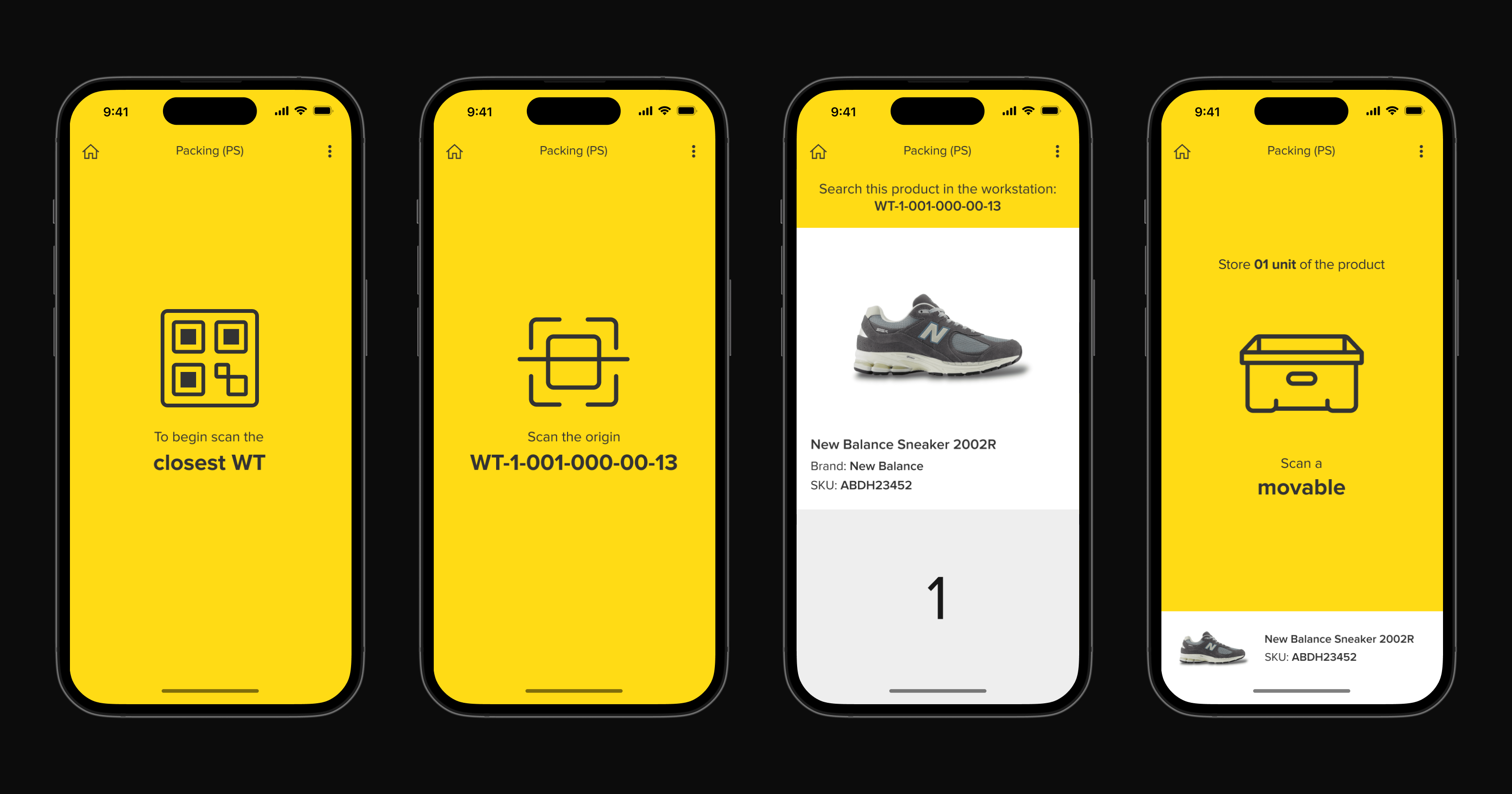We introduced Guided Transfers to tackle lost inventory and inefficiencies in Packing. The result? A 1.5% drop in product losses, $250K recovered annually, and 46.000 hours saved — all while making workflows smoother and more reliable for the operation.

Mercado Libre, one of the largest logistics platforms in Latin America, relies on its Fulfillment Centers to ensure seamless product flow between sellers and buyers. Within these warehouses, Packing, the process of preparing orders for shipment, presented a significant challenge.
When orders were canceled, products needed to be transfered to saleable stock through temporary "virtual positions" known as RR (Regular Restock). However, this process was plagued by inefficiencies, lack of traceability, and disconnected workflows.
As a Product Designer, I was tasked with designing a solution to address these issues — the challenge: ensure a traceable, standardized, and user-friendly operational process that optimized stock movement in Packing.

To truly grasp the problems we had, I immersed myself in the world of warehouse operations by visiting multiple FCs, where I observed how operators, problem solvers, and the inventory team handled canceled orders in Packing.
Conversations with warehouse leaders further uncovered frustration with inconsistent practices and missing tracking information, leading to lost products and productivity problems.
In Packing, there was a clear disconnect between physical product transfers and the system tracking using the RR position. The process was disorganized, relying on spreadsheets and inconsistent tracking methods, making it difficult to ensure that products were transfered and stored properly. This led to delays, errors, negative impact on operators SLAs and a lack of traceability, which impacted overall productivity and revenue.
Guided Transfer was an existing feature, and by revisiting it, we identified its potential to address these key operational challenges. By refining its structure — clear origins, destinations, task backlogs, and prioritized routes — we adapted it to better fit our process.

I worked with a cross-functional team to map the operational user flow, focusing on how products moved through Packing and how tasks were managed. This analysis highlighted issues like product tracking, lost items, and time inefficiencies.
Based on these insights, I designed a high-fidelity prototype in Figma, tested it with users, and iterated it through feedback, adding features like task backlogs, route prioritization, and a simplified interface.
I delivered screens for Guided Transfers, optimized for handheld scanners used by operators, and a desktop report for experienced users to create transfers, monitor movements, and adjust priorities and routes.
The feature was implemented in a controlled environment, ensuring smooth integration and enhancing operational efficiency.

1.5% drop in product losses
$250K recovered annually
46.000 hours saved in packing
This project really showed how important it is to keep users at the center of the design process and to iterate based on real feedback. By focusing on improving the workflow, we made things easier for operators, boosted productivity, and created a more reliable process, all of which helped drive a noticeable business improvement.
